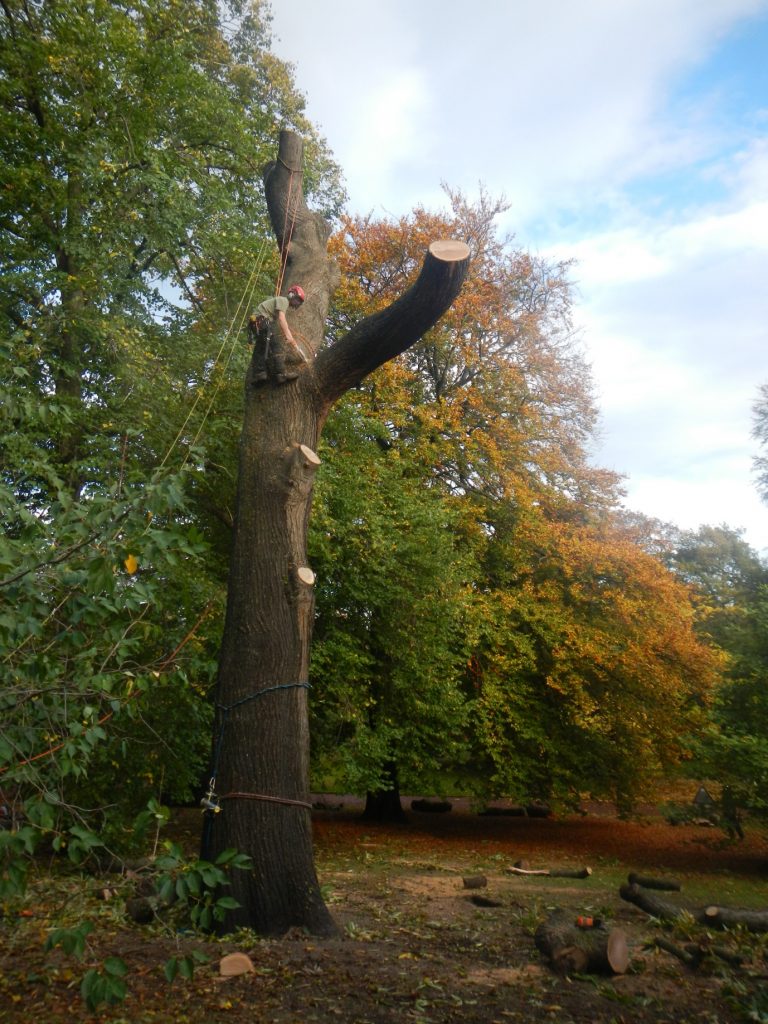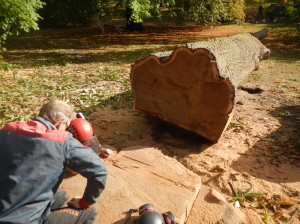If you were in the Garden last week you would have heard the sound of the arboretum team dismantling a large sweet chestnut. It is always a great shame to loose such a large tree from the living collection and the decision to remove a tree follows quite a rigorous process.
Trees in the garden are routinely surveyed. When a tree has features that suggest it may become a hazard it is investigated. The root collar of this tree was excavated using an air spade to look at the condition of the roots. The root collar was found to be in a poor condition.
The option of reduction by pruning was discussed but due to the poor condition of the tree in this case it was decided to fell and replant.
Once the tree was completely removed we counted the rings to age the tree. The ring count put the tree at 141 which means it was planted (or grew from a seedling) in 1872. This showed that this was an old Rochied Estate tree.
We have removed the stump with the JCB and will replant the area this season. One of the trees to be planted will be a wild origin sweet chestnut grown here at Inverleith from seed collected at 1480 m in the Kackar Mountains in North East Turkey. The seed was brought back in 2008 and the tree will have high scientific and conservation value because of the data associated with the collection.
Some of the timber has been put to one side to be inoculated with various fungi for an exciting new project….. Watch this space!


